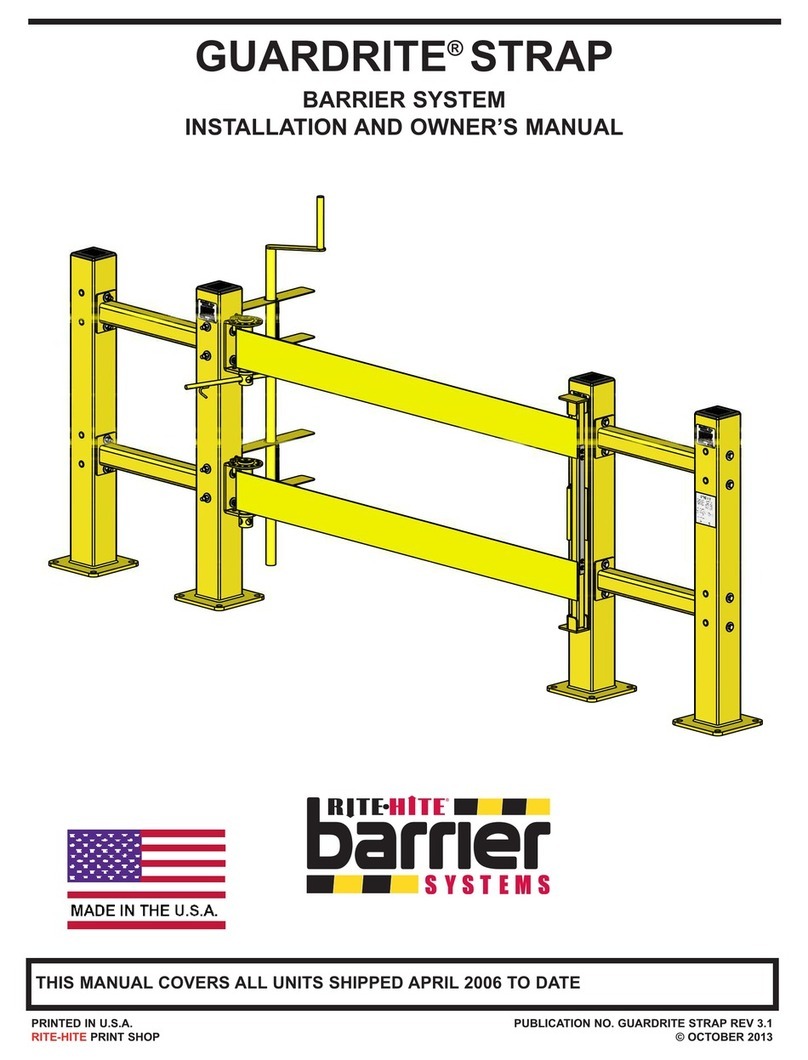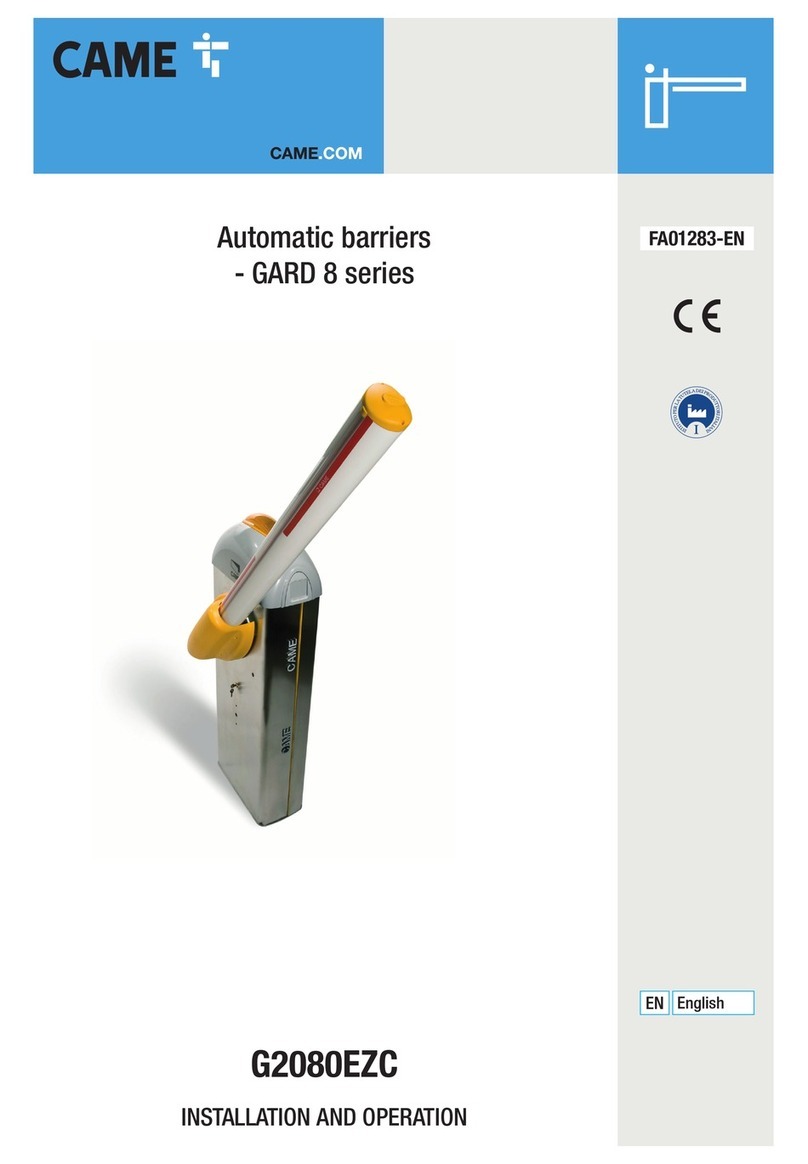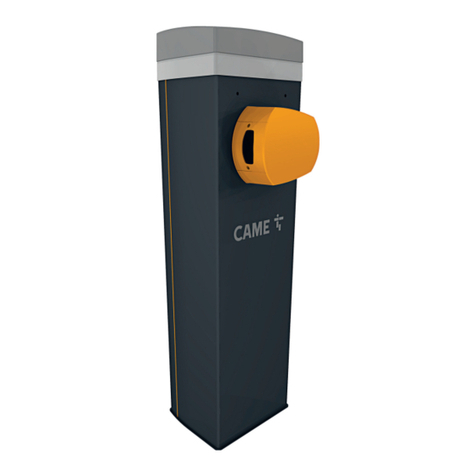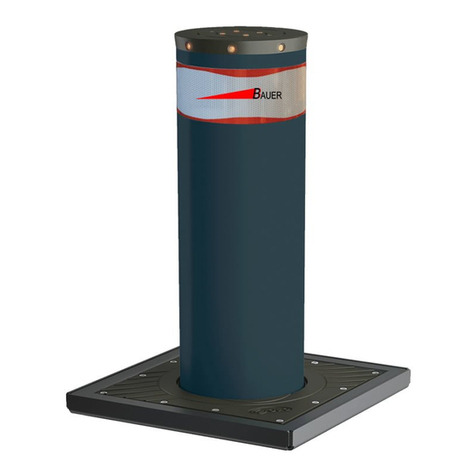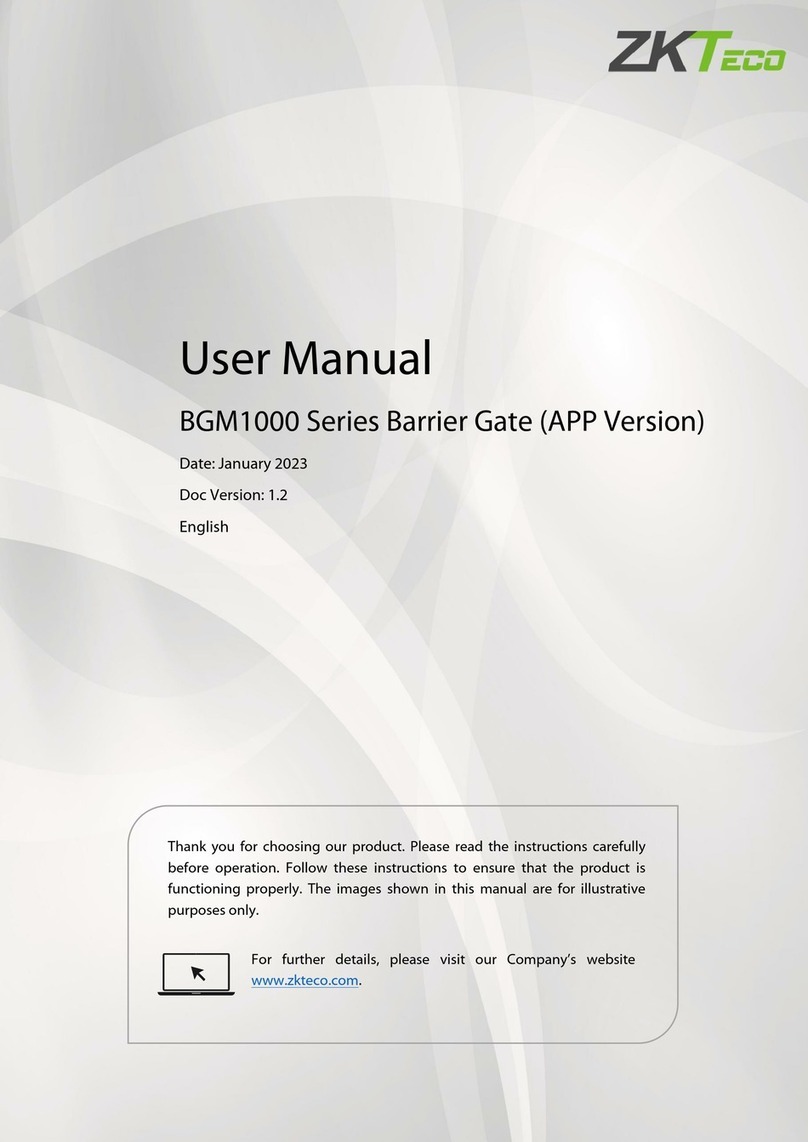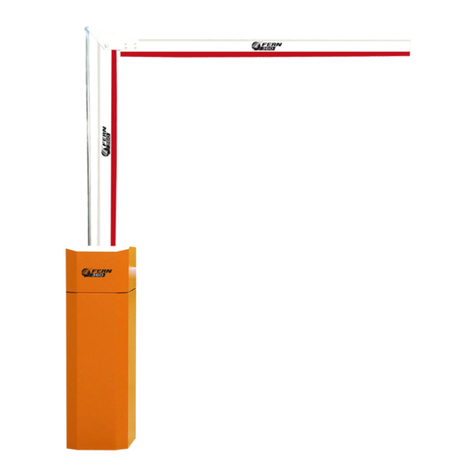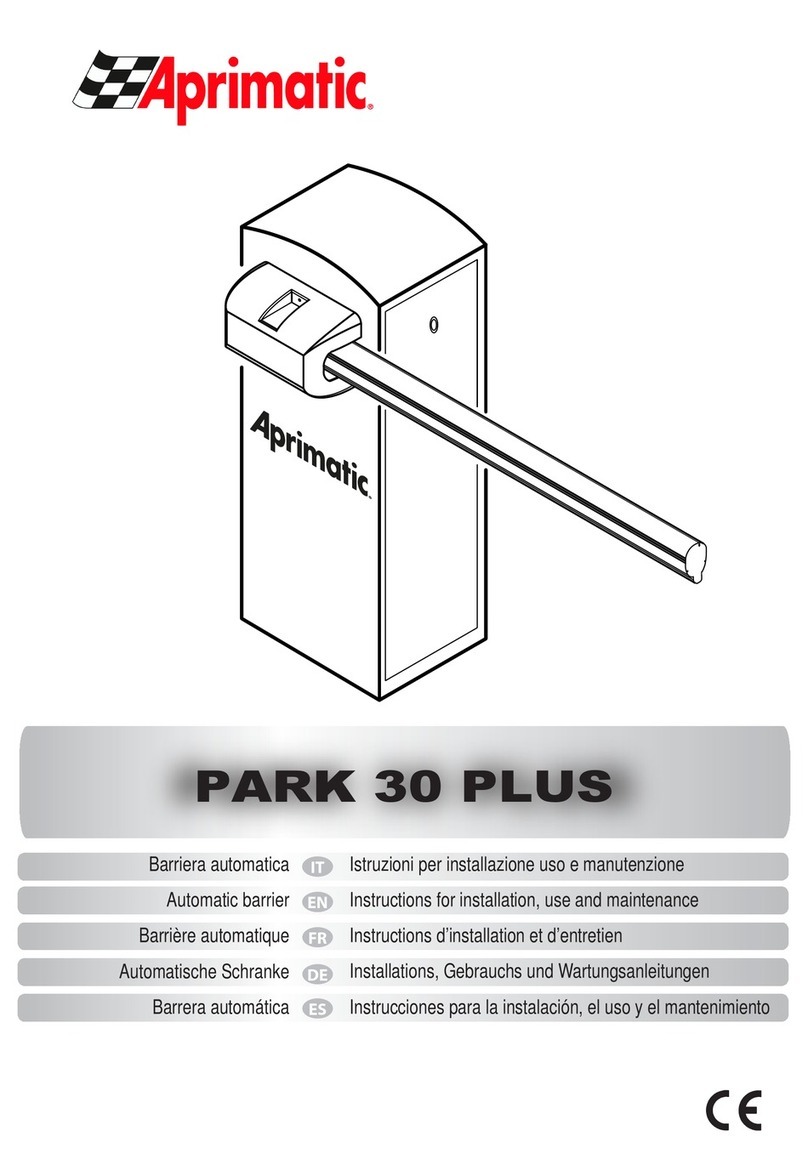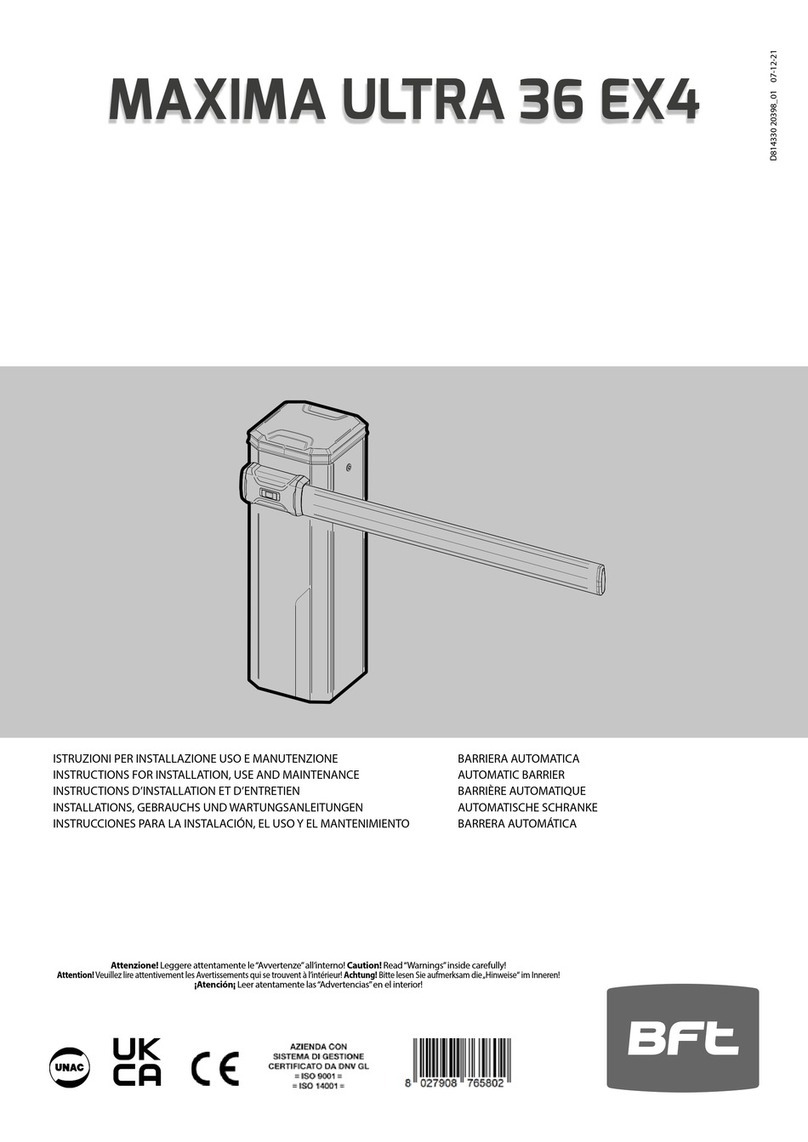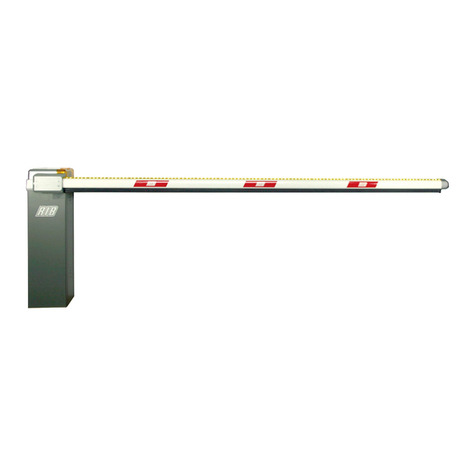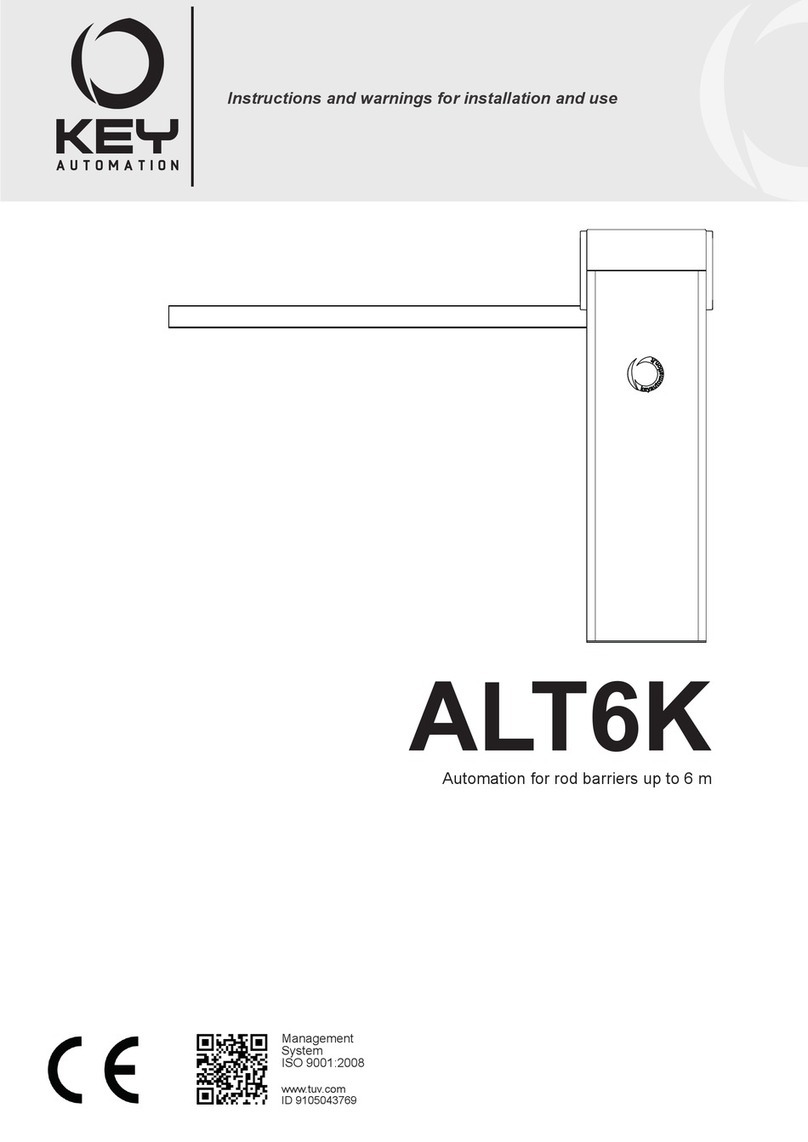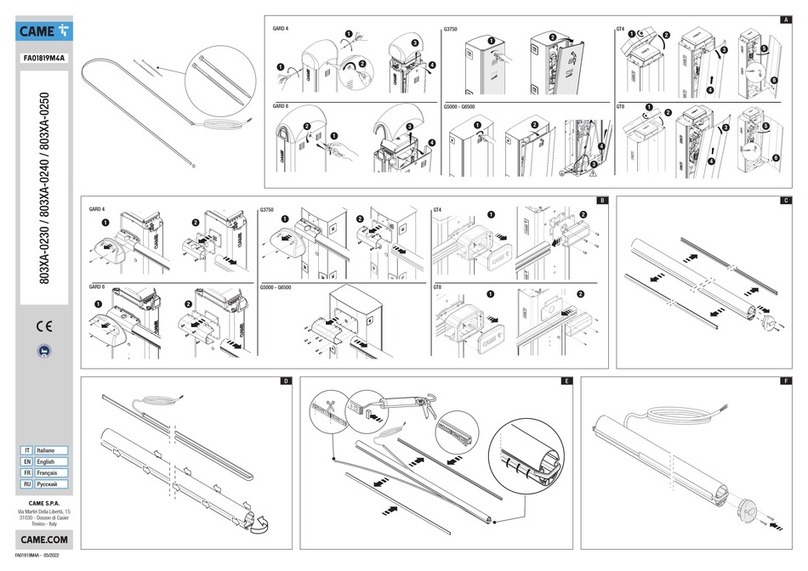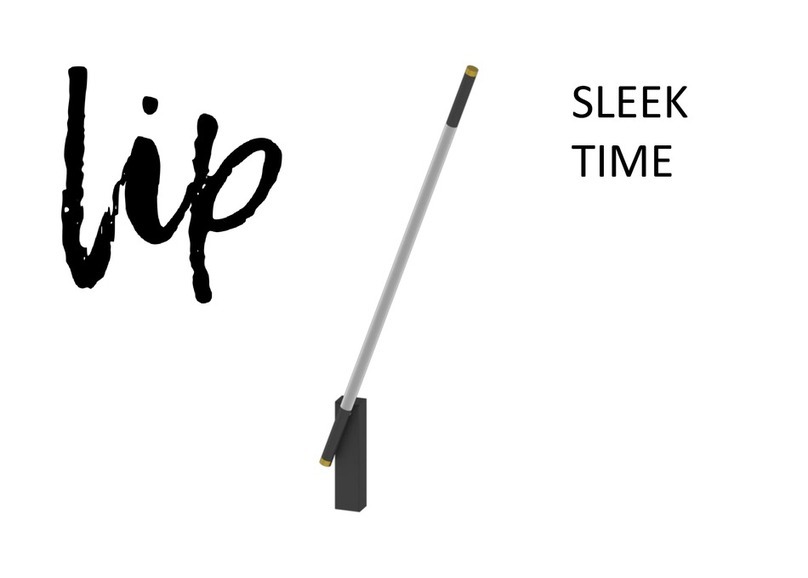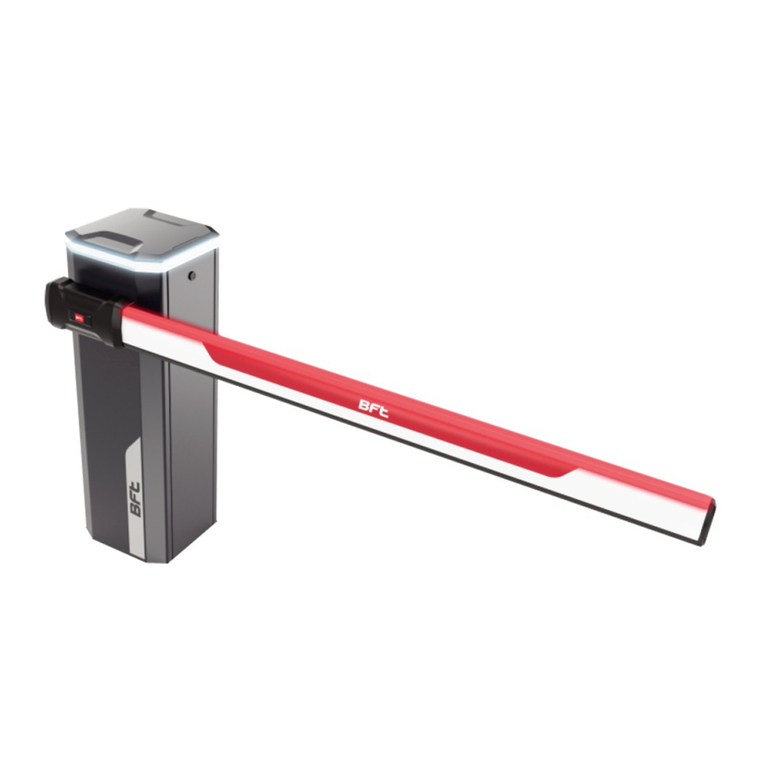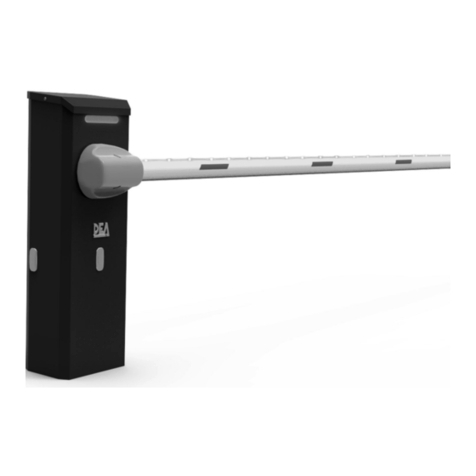
IT
3
1 - AVVERTENZE PER LA SICUREZZA
ATTENZIONE – ISTRUZIONI ORIGINALI – importanti istruzioni
di sicurezza. É importante per la sicurezza delle persone se-
guire le seguenti istruzioni di sicurezza. Conservare queste
istruzioni.
Leggere attentamente le istruzioni prima di eseguire l’installazione.
La progettazione e la fabbricazione dei dispositivi che com-
pongono il prodotto e le informazioni contenute nel presente
manuale rispettano le normative vigenti sulla sicurezza. Ciò
nonostante un’installazione e una programmazione errata pos-
sono causare gravi ferite alle persone che eseguono il lavoro
e a quelle che useranno l’impianto. Per questo motivo, durante
l’installazione, è importante seguire attentamente tutte le istru-
zioni riportate in questo manuale.
Non procedere con l’installazione se si hanno dubbi di qualunque
natura e richiedere eventuali chiarimenti al Servizio Assistenza Key
Automation.
Per la legislazione Europea la realizzazione di una porta auto-
matica o un cancello automatico deve rispettare le norme pre-
viste dalla Direttiva 2006/42/CE (Direttiva Macchine) e in parti-
colare, le norme EN 12445; EN 12453; EN 12635 e EN 13241-1,
che consentono di dichiarare la conformità dell’automazione.
In considerazione di ciò, il collegamento denitivo dell’automatismo
alla rete elettrica, il collaudo dell’impianto, la sua messa in servizio
e la manutenzione periodica devono essere eseguiti da personale
qualicato ed esperto, rispettando le istruzioni riportate nel riquadro
“Collaudo e messa in servizio dell’automazione”.
Inoltre, egli dovrà farsi carico di stabilire anche le prove previste in
funzione dei rischi presenti e dovrà vericare il rispetto di quanto
previsto da leggi, normative e regolamenti: in particolare, il rispetto
di tutti i requisiti della norma EN 12445 che stabilisce i metodi di
prova per la verica degli automatismi per porte e cancelli.
ATTENZIONE - Prima di iniziare l’installazione, effettuare le se-
guenti analisi e veriche:
vericare che i singoli dispositivi destinati all’automazione siano
adatti all’impianto da realizzare.Al riguardo, controllare con partico-
lare attenzione i dati riportati nel capitolo “Caratteristiche tecniche”.
Non effettuare l’installazione se anche uno solo di questi dispositivi
non è adatto all’uso;
vericare se i dispositivi acquistati sono sufcienti a garantire la si-
curezza dell’impianto e la sua funzionalità;
eseguire l’analisi dei rischi che deve comprendere anche l’elenco
dei requisiti essenziali di sicurezza riportati nell’Allegato I della Di-
rettiva Macchine, indicando le soluzioni adottate. L’analisi dei rischi
è uno dei documenti che costituiscono il fascicolo tecnico dell’au-
tomazione. Questo dev’essere compilato da un installatore profes-
sionista.
Considerando le situazioni di rischio che possono vericarsi
durante le fasi di installazione e di uso del prodotto è necessa-
rio installare l’automazione osservando le seguenti avvertenze:
non eseguire modiche su nessuna parte dell’automatismo se non
quelle previste nel presente manuale. Operazioni di questo tipo
possono solo causare malfunzionamenti. Il costruttore declina ogni
responsabilità per danni derivanti da prodotti modicati arbitraria-
mente;
evitare che le parti dei componenti dell’automazione possano venire
immerse in acqua o in altre sostanze liquide. Durante l’installazio-
ne evitare che i liquidi possano penetrare all’interno dei dispositivi
presenti;
se il cavo di alimentazione risulta danneggiato esso deve essere
sostituito dal costruttore o dal suo servizio di assistenza tecnica o
comunque da una persona con qualica similare in modo da preve-
nire ogni rischio;
se sostanze liquide penetrano all’interno delle parti dei componenti
dell’automazione, scollegare immediatamente l’alimentazione elet-
trica e rivolgersi al Servizio Assistenza Key Automation. L’utilizzo
dell’automazione in tali condizioni può causare situazioni di pericolo;
non mettere i vari componenti dell’automazione vicino a fonti di ca-
lore né esporli a amme libere. Tali azioni possono danneggiarli ed
essere causa di malfunzionamenti, incendio o situazioni di pericolo;
tutte le operazioni che richiedono l’apertura del guscio di protezio-
ne dei vari componenti dell’automazione, devono avvenire con la
centrale scollegata dall’alimentazione elettrica. Se il dispositivo di
sconnessione non è a vista, apporre un cartello con la seguente
dicitura: “MANUTENZIONE IN CORSO”;
tutti i dispositivi devono essere collegati ad una linea di alimentazio-
ne elettrica dotata di messa a terra di sicurezza;
il prodotto non può essere considerato un efcace sistema di prote-
zione contro l’intrusione. Se desiderate proteggervi efcacemente,
è necessario integrare l’automazione con altri dispositivi;
il prodotto può essere utilizzato esclusivamente dopo che è stata
effettuata la “messa in servizio” dell’automazione, come previsto nel
paragrafo “Collaudo e messa in servizio dell’automazione”;
prevedere nella rete di alimentazione dell’impianto un dispositivo di
disconnessione con una distanza di apertura dei contatti che con-
senta la disconnessione completa nelle condizioni dettate dalla ca-
tegoria di sovratensione III;
per la connessione di tubi rigidi e essibili o passacavi utilizzare
raccordi conformi al grado di protezione IP55 o superiore;
l’impianto elettrico a monte dell’automazione deve rispondere alle
vigenti normative ed essere eseguito a regola d’arte;
si consiglia di utilizzare un pulsante di emergenza da installare nei
pressi dell’automazione (collegato all’ingresso STOP della scheda
di comando) in modo che sia possibile l’arresto immediato in caso
di pericolo;
questo dispositivo non è destinato a essere usato da persone (bam-
bini compresi) le cui capacità siche, sensoriali o mentali siano ri-
dotte, oppure con mancanza di esperienza o di conoscenza, a meno
che esse abbiano potuto beneciare, attraverso l’intermediazione di
una persona responsabile della loro sicurezza, di una sorveglianza
o di istruzioni riguardanti l’uso del dispositivo;
prima di avviare l’automazione assicurarsi che le persone non siano
nelle immediate vicinanze;
prima di procedere a qualsiasi operazione di pulizia e manutenzione
dell’automazione eseguire la disconnessione dalla rete elettrica;
particolare attenzione per evitare lo schiacciamento tra la parte gui-
data ed eventuali elementi ssi circostanti;
i bambini devono essere sorvegliati per sincerarsi che non giochino
con l’apparecchio.
ATTENZIONE - Il materiale dell’imballaggio di tutti i componenti
dell’automazione deve essere smaltito nel pieno rispetto della
normativa presente a livello locale.
ATTENZIONE - I dati e le informazioni indicate in questo ma-
nuale sono da ritenersi suscettibili di modica in qualsiasi mo-
mento e senza obbligo di preavviso da parte di Key Automation
S.r.l.
